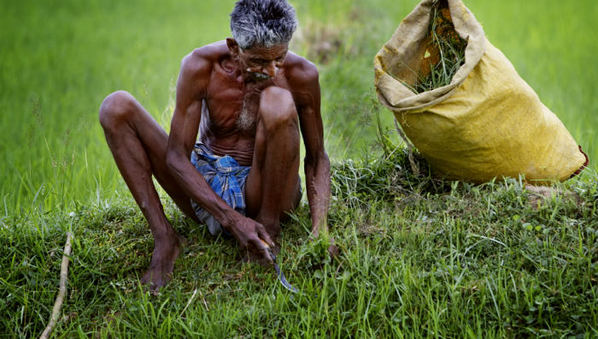Changes in temperature and precipitation “are expected to reduce global crop productivity” and drive people to eat less red meat and less water-intensive fruit and vegetables, says the study published yesterday in The Lancet. This would counteract ongoing efforts to improve nutrition among the world’s poorest people.
“Climate change takes away around 30 per cent of the progress [in nutrition improvement] that you would otherwise expect” if we limited carbon emissions to curb global warming, says Marco Springmann, the study’s lead author.
In contrast with previous models, this study looks at the quality — not just the quantity — of food available on a warmer planet to estimate how this will impact health. “Even quite modest reductions in per-person food availability could lead to changes in the energy content and composition of diets that are associated with substantial negative health implications,” the paper says.
Most climate-related deaths in this model are projected to happen in South-East Asia and the Western Pacific region, in particular in China and India. The study modelled deaths from coronary heart disease, stroke, cancer and an aggregate of other causes related to unhealthy food.
“If you take India for example, they will [be likely to] substitute vegetables and fruit with potatoes and rice that have less health benefits than leafy vegetables,” says Springmann, who is a policy researcher at the Oxford Martin Programme on the Future of Food in the United Kingdom.
“I hope that the traditional focus on calories [only] will be questioned and people start looking at whole diets,” Springmann tells SciDev.Net.
A 2014 report by the UN’s World Health Organization (WHO) found that climate change would cause 85,000 deaths of under-fives due to malnutrition in 2050, but this did not take into account changes in diets.
The strongest factor determining death rates in the new study is the estimated reduction of fruit and vegetable consumption, says Diarmid Campbell-Lendrum, one of the editors of the 2014 report and WHO team leader on climate change and health.
“This is plausible as we know that low levels of consumption of these types of foods are now a major killer,” he adds. “But it is important to point out that there has been much less research on the effect of climate change on the production, and then the availability, of fruits and vegetables, than there has been on staple crops.”
Campbell-Lendrum praises the new study for “broadening the range of evidence beyond simply calories” and for increasing understanding that climate change is a great threat to public health, and food and nutrition security.
He also points out that the eventual impacts of climate change on agriculture, the availability and price of food, and diet “are not set in stone”.
“They will depend at least as much on our policy and individual choices, including what we do in response to climate change, as to the effects of climate change itself,” Campbell-Lendrum says.
